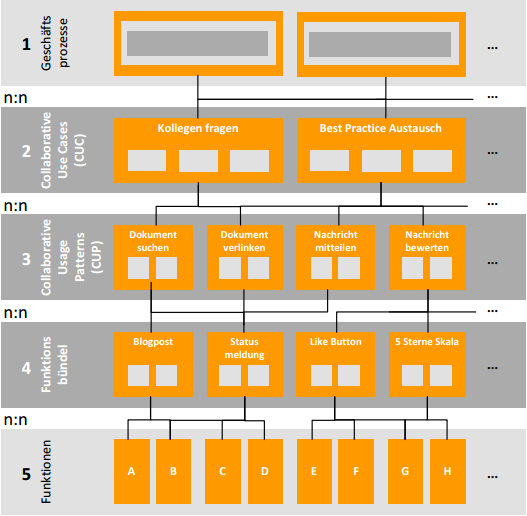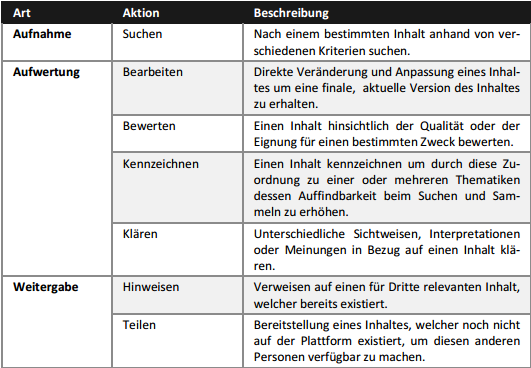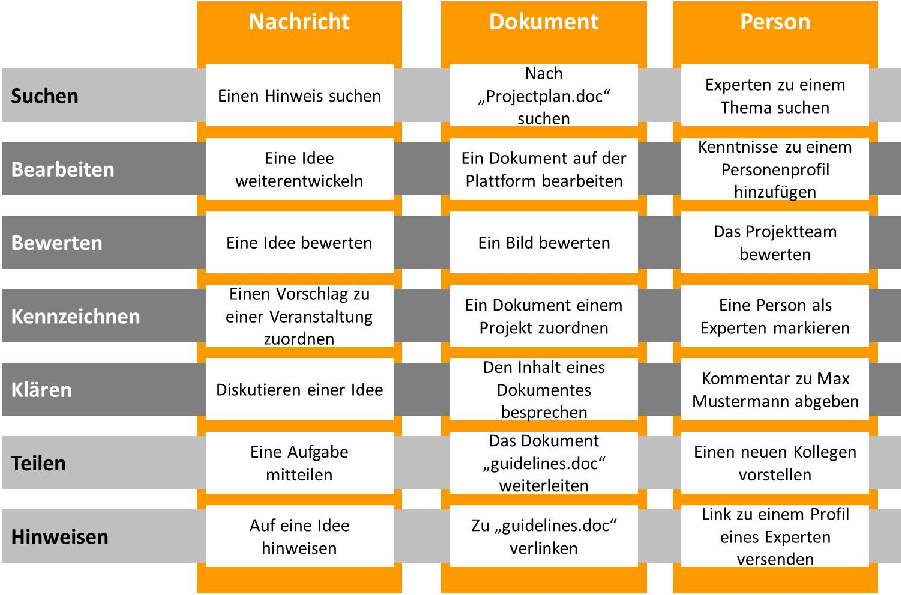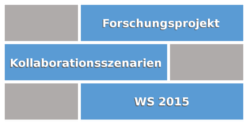The aperto framework has been designed to assist in the selection, implementation and optimization of corporate social software (Richter et al. 2012). A part of this framework is the aperto five-level model. Here a connection between processes within the company to the individual functions of corporate social software is made on five different levels, which are used in the context of business processes (Richter et al. 2012).

aperto-fünf-Ebenen-Modell (Richter et al. 2012)
The third level consists of Collaborative Usage Patterns (CUP). The CUP represent in an abstract manner the ways corporate social software can be used. The abstract CUP can be executed with different elements of the 4th level, that bundle functions of corporate social software (Richter et al . 2012). The collaborative features of the catalogue for collaboration scenarios refer to the 4th level of the aperto five-level model.
Activities
According to Richter et al. (2012) all possibilities for using corporate social software can be described via the two dimensions Activity and Object.
An Activity is defined in the following way: "Eine Aktion beschreibt was mit Hilfe einer Plattform getan wird, aber nicht wie die Unterstützung der Aktion in der Plattform umgesetzt wird" (Richter et al. 2012). The different possible activities are explained by Richter et al. (2012) in a table:

Aktionen im Rahmen eines CUP (Richter et al. 2012)
Object classes
Activities are executed on objects. Richter et al. (2012) name three different relevant object classes:
Nachrichten: Nachrichten dienen der Übermittlung von Inhalten, Dokumenten, Personen oder Referenzen und bestehen aus mehreren physischen oder logischen Einheiten.
Dokument: Dokumente sind Sammlungen von Inhalten, welche als eine physische oder logische Einheit gekapselt bzw. gespeichert sind.
Person: Personen(profile) sind die digitale Repräsentation von real existierenden Menschen.
CUP-Matrix
The combination of the dimensions Activity and Object delivers as a result 21 abstract Collaborative Usage Patterns (CUP). Richter et al. (2012) illustrate them in the so called CUP-Matrix:

CUP-Matrix (Richter et al. 2012)
The entries of the CUP-Matrix only show examples for the abstract Collaborative Usage Patterns (Richter et al. 2012). Some of these examples have been changed to more general examples that were used in the catalogue of collaboration scenarios, see the next table:

abstract CUP-Matrix (cf. Richter et al. 2012)
References
Richter, A. et al., 2012. aperto – Ein Rahmenwerk zur Auswahl, Einführung und Optimierung von Corporate Social Software M. Koch & F. Ott, eds., München: Forschungsgruppe Kooperationssysteme, Universität der Bundeswehr München.


